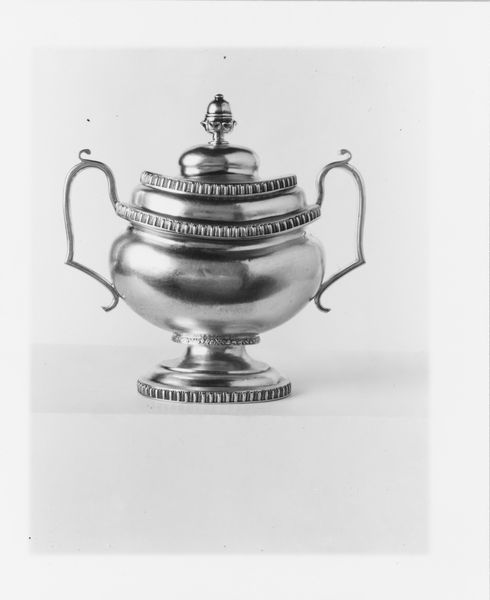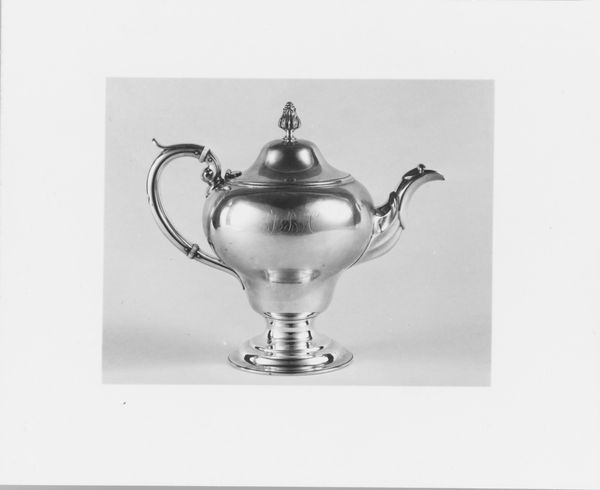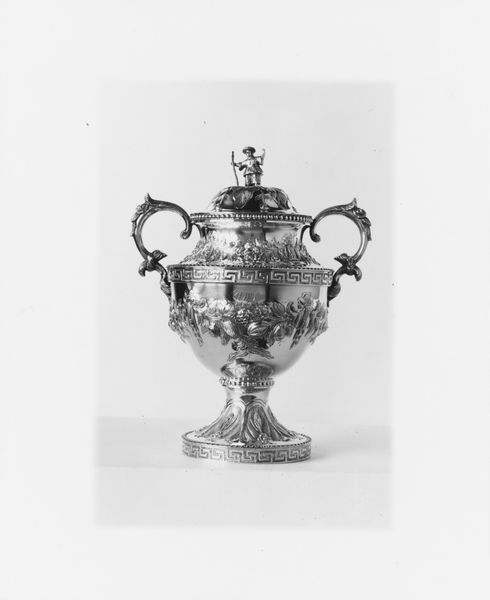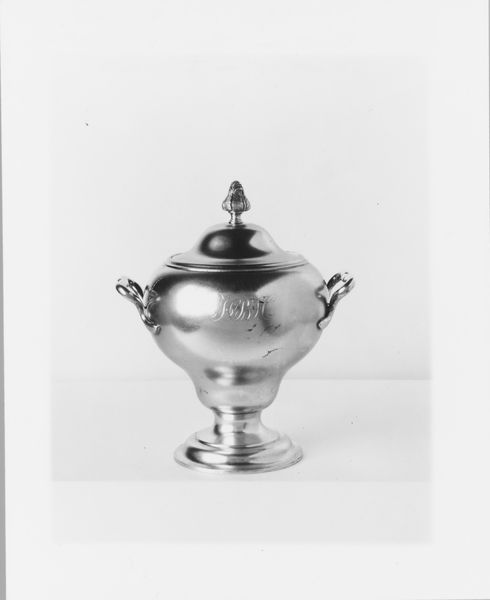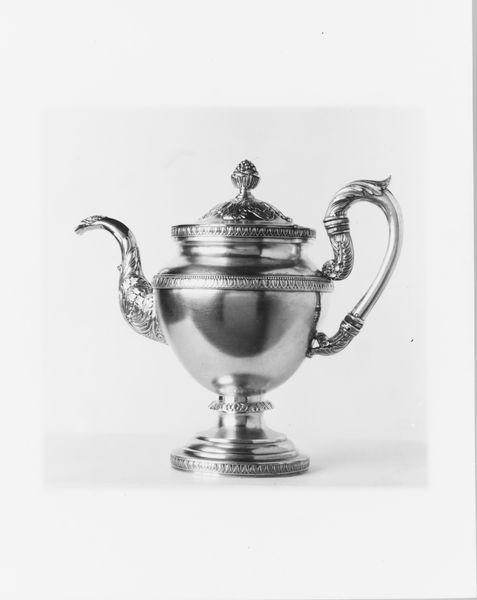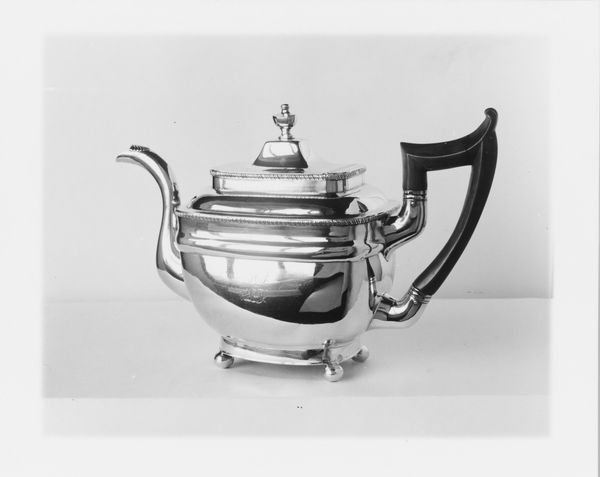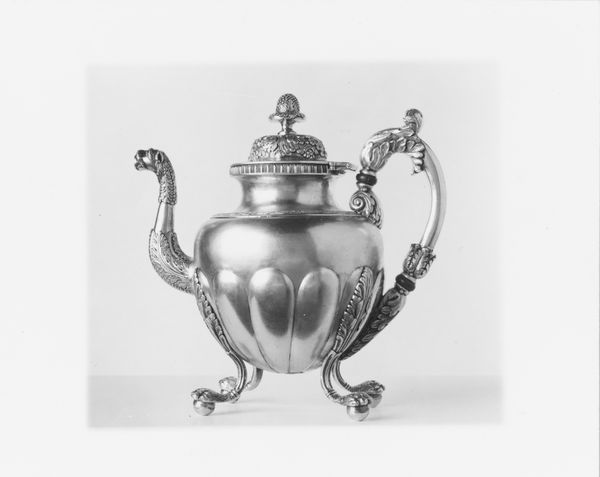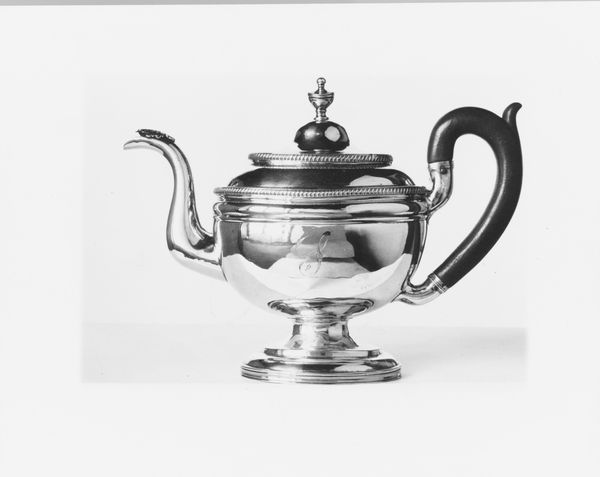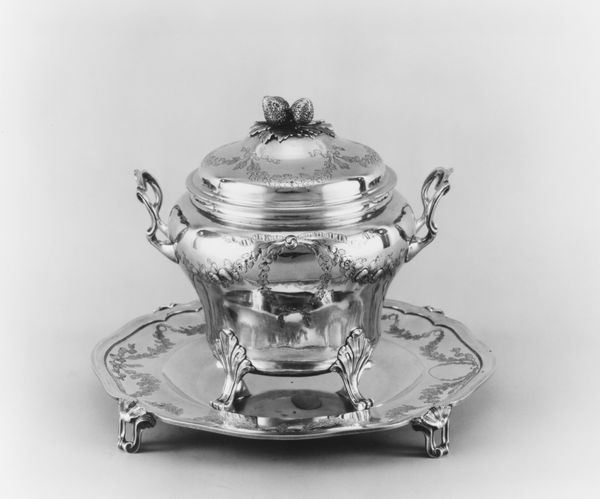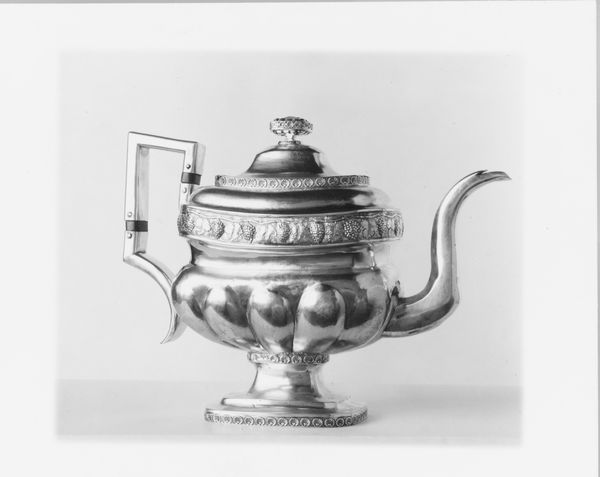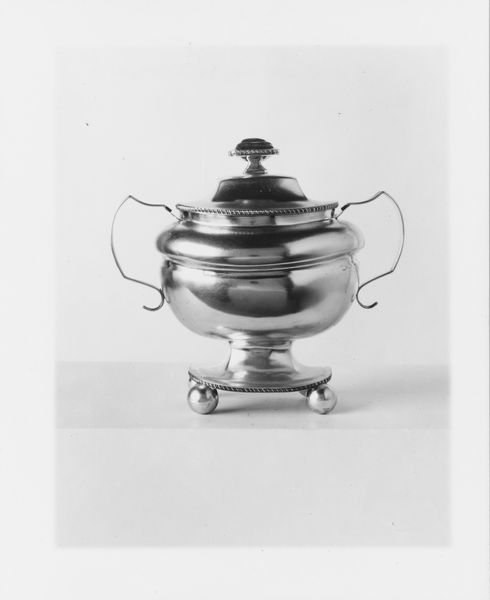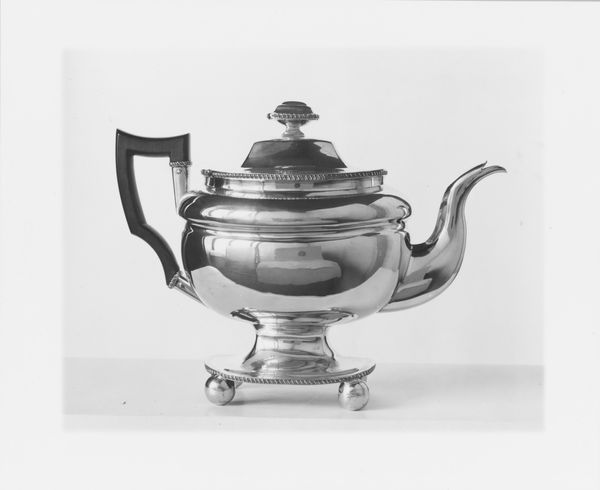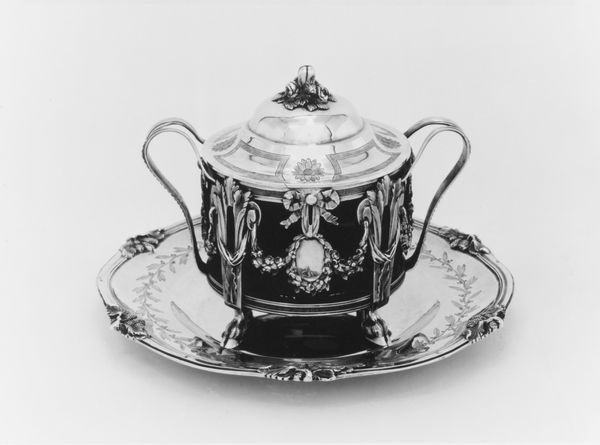
silver, metal
#
silver
#
metal
#
decorative-art
Dimensions: Overall: 6 3/8 x 6 15/16 x 4 5/8 in. (16.2 x 17.6 x 11.7 cm); 16 oz. 7 dwt. (508.8 g) Cover: Diam. 3 11/16 in. (9.4 cm) Body: H. 5 3/4 in. (14.6 cm); 13 oz. 11 dwt. (422.1 g)
Copyright: Public Domain
Curator: Here we have a stunning example of early 19th-century silver craftsmanship. This teapot, created around 1810-1820 by William B. Heyer, stands as a testament to the decorative arts of the era. Editor: My first impression is of pure elegance. It's understated, almost restrained, yet possesses a quiet grandeur. I immediately think about its function within domestic life during that period. Curator: Absolutely. Pieces like this reveal so much about the social rituals and class distinctions of the time. The ritual of tea drinking was highly symbolic. It was a social event used to cement economic alliances. Teapots such as this also symbolized status and access to world trade and colonization. Editor: The material itself – silver – is inherently tied to wealth and power. Given its potential to tarnish quickly if poorly handled, owning such an object signals an access to servants as well. And, there’s a very visible tension here, I think, between functionality and pure, almost ostentatious display. Those ball feet, while adding some elegance, are a functional design for a delicate, hot object, don't you agree? Curator: Indeed, the form reflects Neoclassical influences popular at the time with those fluted details and symmetrical lines. While meant for functional use, its elaborate craftsmanship elevated the commonplace, reflecting aspirations of the aspiring bourgeois and gentrified landowners in an ever-changing economic reality of industrial production. This detail tells a story of emerging social identities during the regency and pre-Victorian period. Editor: Exactly, even its presence in a collection, removed from that context, continues that process of conferring value and signifying a particular narrative about wealth and artistry. Curator: In studying how historical art is used to reflect societal changes, my hope is always that those messages from the past give meaning to our society today, in our museums and schools. Editor: For me, it serves as a potent reminder of the systems that shape both the past and the present. It forces us to examine how taste is dictated and used to communicate power.
Comments
No comments
Be the first to comment and join the conversation on the ultimate creative platform.
